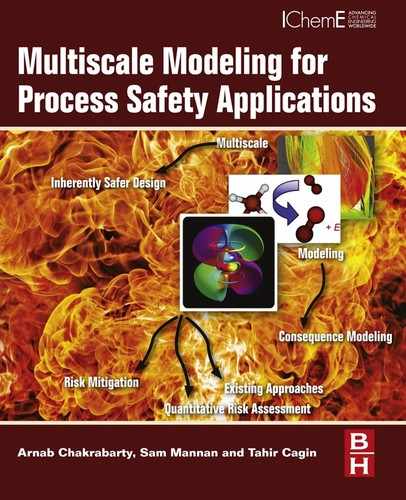3.12. Conclusion
Molecular modeling has been proven to be a very powerful tool in characterizing materials with various purposes. Similar to other areas of current research interest, such as in designing future generation smart materials, molecular modeling has shown to be a promising and powerful tool in assessing hazardous nature of chemicals under various process conditions. The topics covered does not span over all areas related to process safety where molecular modeling approaches can be implemented are not discussed here. Modeling evaporation (Consolini and Aggarwal, 2003) and its characteristics is one such example. Accidental spills of hazardous liquid may require detailed understanding of evaporation characteristics and characteristics of the cloud formed from it. In addition, the possibility of using molecular modeling in investigating fire incidents is not covered here. Since color of a flame is a function of the materials involved in a combustion, quantum mechanical approaches have the potential to reveal important insight in combustion phenomena of novel materials. Although, beyond the scope of typical process safety applications, the possibility to investigate toxicity effects on biological macromolecules, keeping in mind the pros and cons of the molecular modeling approaches, is also promising (Friedman et al., 2013). In an attempt to study factors affecting risk through long-term exposure, researchers have also studied interaction between aerosol and phenol particles as emitted from automobile and industrial exhaust (Falsig et al., 2006). Examples on implementation of molecular dynamics simulation approaches from a completely different perspective such as finding escape dynamics during emergency evacuation (Rassia and Siettos, 2010) also exist. Some other applications such as corrosion inhibitor studies using quantum mechanical calculations are illustrated in a later chapter relating to equipment failure and are not covered here. Overall, molecular modeling techniques have emerged as a standard tool in a diverse set of material modeling problems including addressing specific concerns related to process safety. The primary aim in this chapter was to introduce the readers to concepts of molecular modeling approaches that might be considered in dealing with assessment of hazardous nature of emerging technologies involving novel processes and materials.
..................Content has been hidden....................
You can't read the all page of ebook, please click here login for view all page.
